Dušan Fister
A comprehensive review of visualization methods for association rule mining: Taxonomy, Challenges, Open problems and Future ideas
Feb 24, 2023Abstract:Association rule mining is intended for searching for the relationships between attributes in transaction databases. The whole process of rule discovery is very complex, and involves pre-processing techniques, a rule mining step, and post-processing, in which visualization is carried out. Visualization of discovered association rules is an essential step within the whole association rule mining pipeline, to enhance the understanding of users on the results of rule mining. Several association rule mining and visualization methods have been developed during the past decades. This review paper aims to create a literature review, identify the main techniques published in peer-reviewed literature, examine each method's main features, and present the main applications in the field. Defining the future steps of this research area is another goal of this review paper.
Time series numerical association rule mining variants in smart agriculture
Dec 07, 2022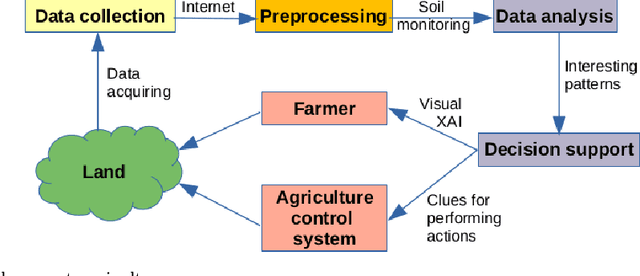



Abstract:Numerical association rule mining offers a very efficient way of mining association rules, where algorithms can operate directly with categorical and numerical attributes. These methods are suitable for mining different transaction databases, where data are entered sequentially. However, little attention has been paid to the time series numerical association rule mining, which offers a new technique for extracting association rules from time series data. This paper presents a new algorithmic method for time series numerical association rule mining and its application in smart agriculture. We offer a concept of a hardware environment for monitoring plant parameters and a novel data mining method with practical experiments. The practical experiments showed the method's potential and opened the door for further extension.
Accurate Long-term Air Temperature Prediction with a Fusion of Artificial Intelligence and Data Reduction Techniques
Sep 29, 2022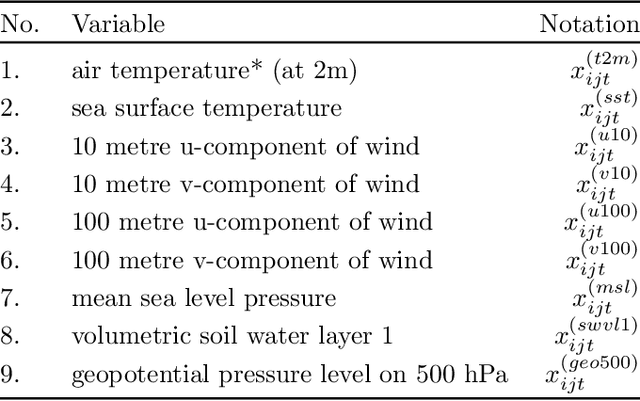
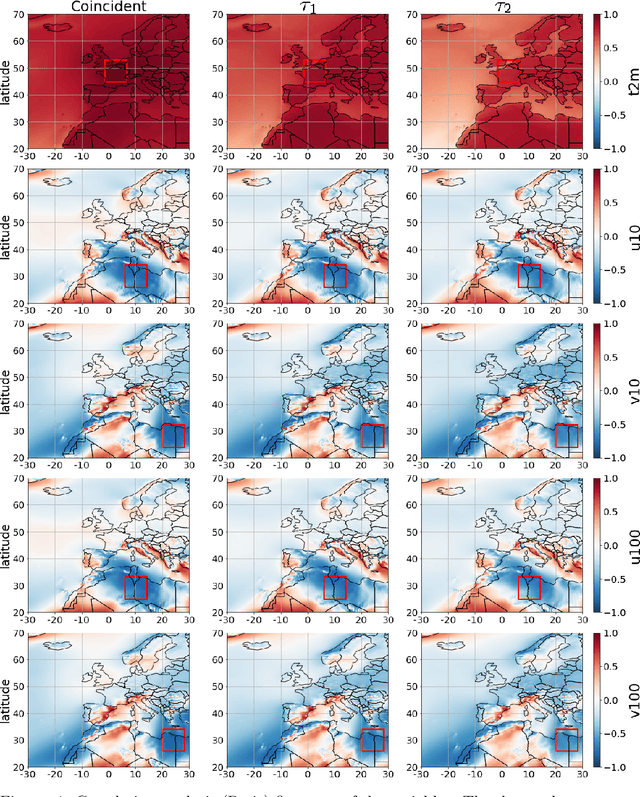
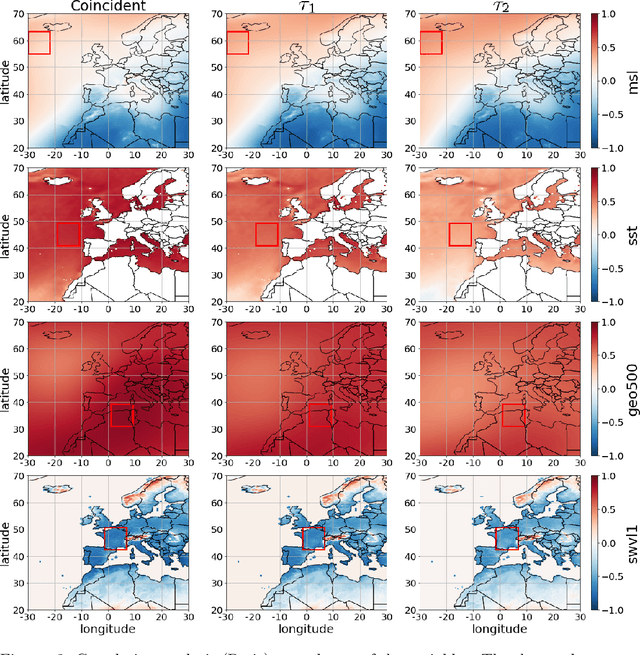
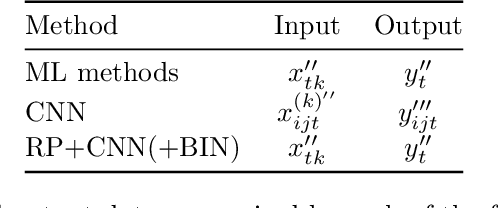
Abstract:In this paper three customised Artificial Intelligence (AI) frameworks, considering Deep Learning (convolutional neural networks), Machine Learning algorithms and data reduction techniques are proposed, for a problem of long-term summer air temperature prediction. Specifically, the prediction of average air temperature in the first and second August fortnights, using input data from previous months, at two different locations, Paris (France) and C\'ordoba (Spain), is considered. The target variable, mainly in the first August fortnight, can contain signals of extreme events such as heatwaves, like the mega-heatwave of 2003, which affected France and the Iberian Peninsula. Thus, an accurate prediction of long-term air temperature may be valuable also for different problems related to climate change, such as attribution of extreme events, and in other problems related to renewable energy. The analysis carried out this work is based on Reanalysis data, which are first processed by a correlation analysis among different prediction variables and the target (average air temperature in August first and second fortnights). An area with the largest correlation is located, and the variables within, after a feature selection process, are the input of different deep learning and ML algorithms. The experiments carried out show a very good prediction skill in the three proposed AI frameworks, both in Paris and C\'ordoba regions.
Modeling preference time in middle distance triathlons
Jul 03, 2017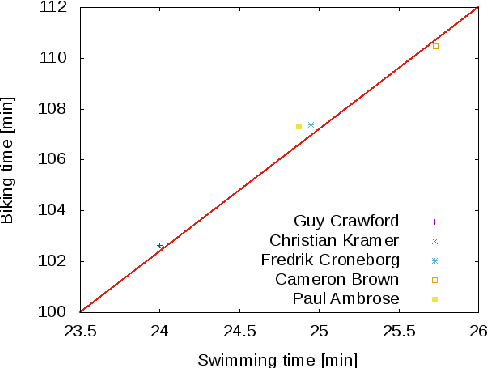
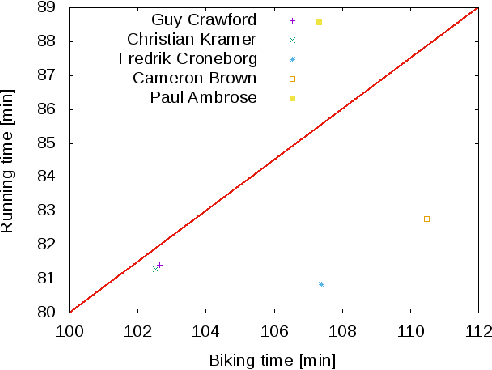
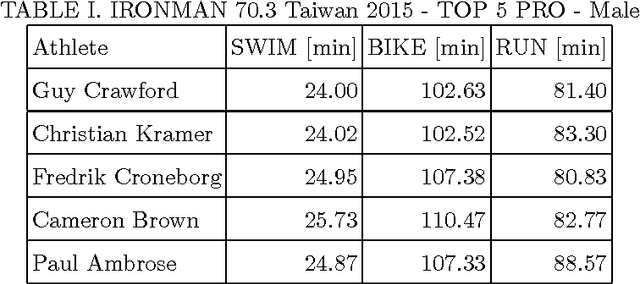
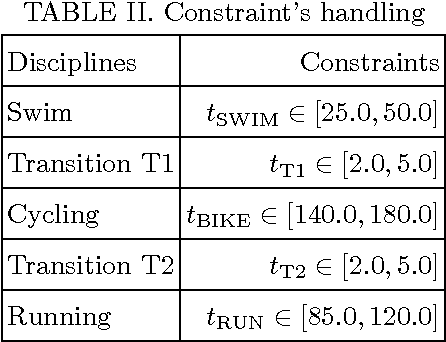
Abstract:Modeling preference time in triathlons means predicting the intermediate times of particular sports disciplines by a given overall finish time in a specific triathlon course for the athlete with the known personal best result. This is a hard task for athletes and sport trainers due to a lot of different factors that need to be taken into account, e.g., athlete's abilities, health, mental preparations and even their current sports form. So far, this process was calculated manually without any specific software tools or using the artificial intelligence. This paper presents the new solution for modeling preference time in middle distance triathlons based on particle swarm optimization algorithm and archive of existing sports results. Initial results are presented, which suggest the usefulness of proposed approach, while remarks for future improvements and use are also emphasized.
Making up for the deficit in a marathon run
May 09, 2017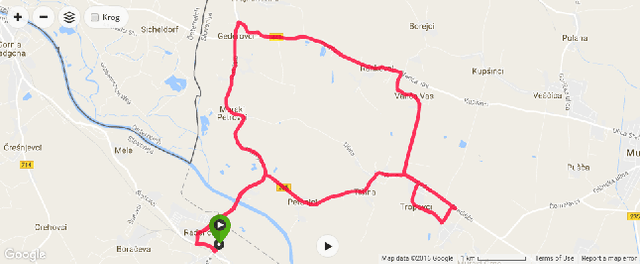
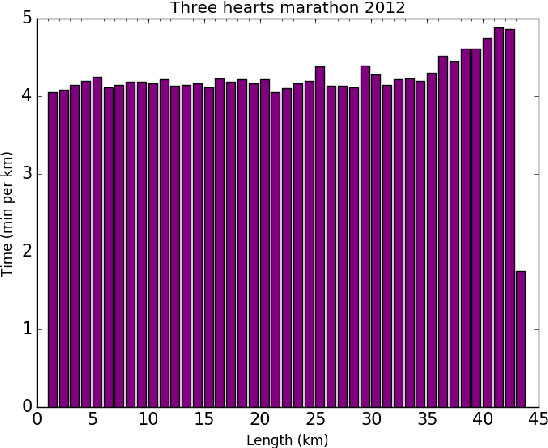
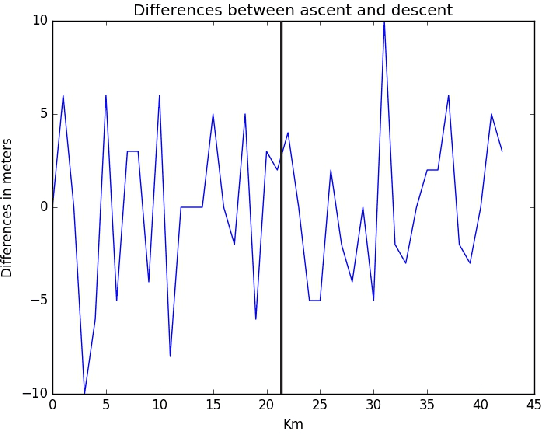
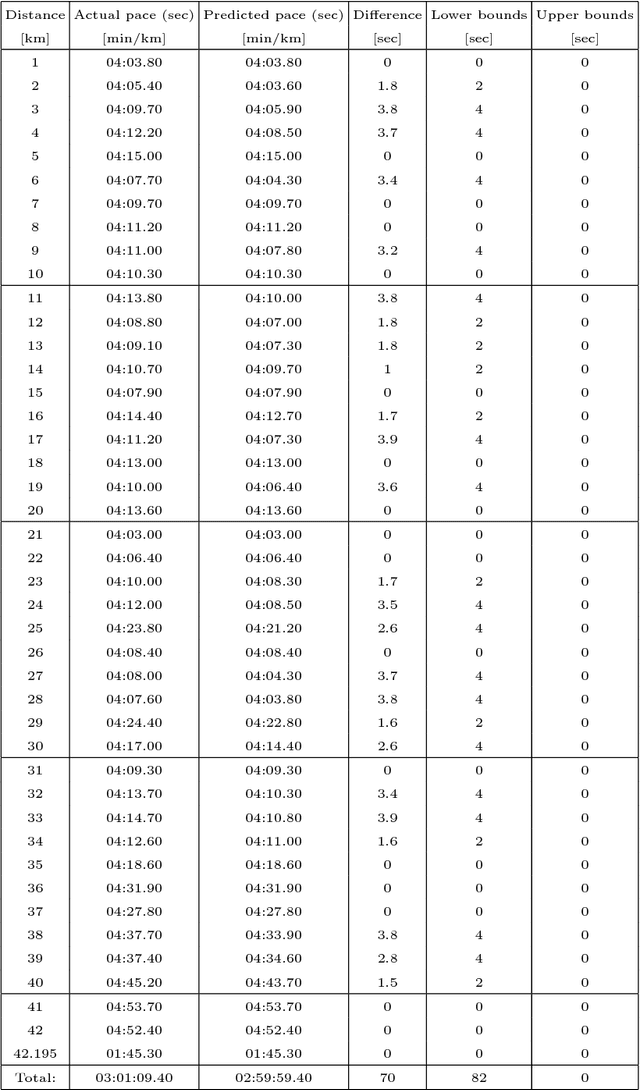
Abstract:To predict the final result of an athlete in a marathon run thoroughly is the eternal desire of each trainer. Usually, the achieved result is weaker than the predicted one due to the objective (e.g., environmental conditions) as well as subjective factors (e.g., athlete's malaise). Therefore, making up for the deficit between predicted and achieved results is the main ingredient of the analysis performed by trainers after the competition. In the analysis, they search for parts of a marathon course where the athlete lost time. This paper proposes an automatic making up for the deficit by using a Differential Evolution algorithm. In this case study, the results that were obtained by a wearable sports-watch by an athlete in a real marathon are analyzed. The first experiments with Differential Evolution show the possibility of using this method in the future.
A Brief Review of Nature-Inspired Algorithms for Optimization
Jul 16, 2013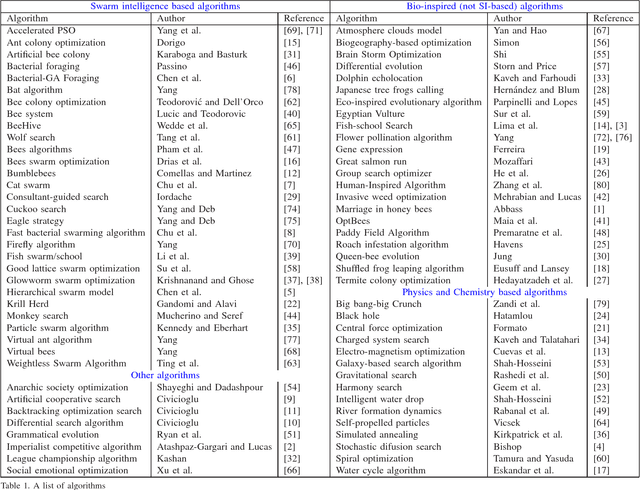
Abstract:Swarm intelligence and bio-inspired algorithms form a hot topic in the developments of new algorithms inspired by nature. These nature-inspired metaheuristic algorithms can be based on swarm intelligence, biological systems, physical and chemical systems. Therefore, these algorithms can be called swarm-intelligence-based, bio-inspired, physics-based and chemistry-based, depending on the sources of inspiration. Though not all of them are efficient, a few algorithms have proved to be very efficient and thus have become popular tools for solving real-world problems. Some algorithms are insufficiently studied. The purpose of this review is to present a relatively comprehensive list of all the algorithms in the literature, so as to inspire further research.
A hybrid bat algorithm
Jun 05, 2013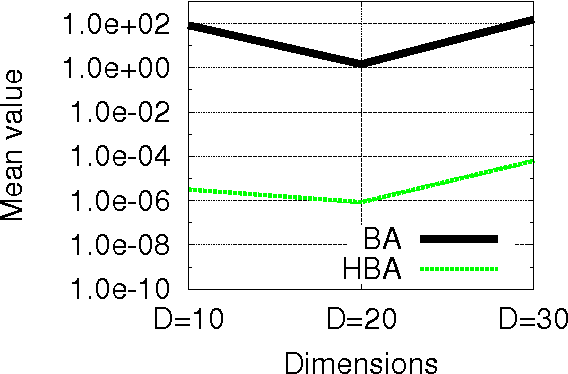
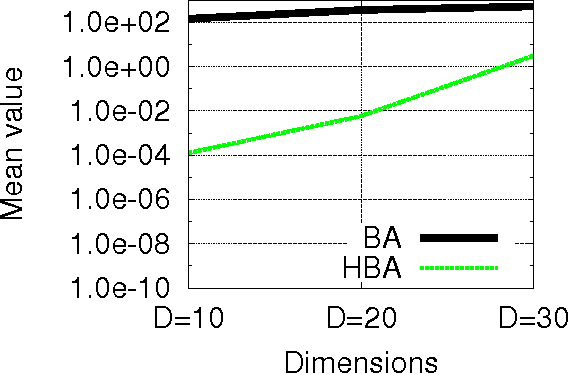
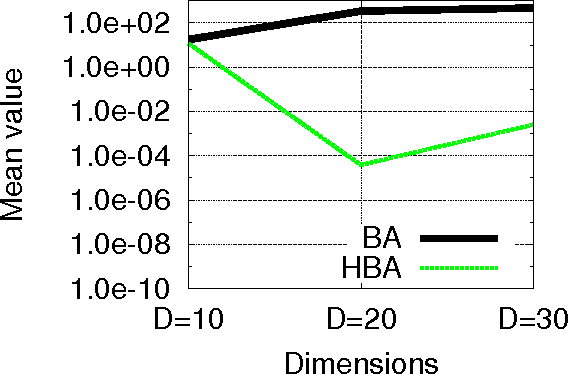
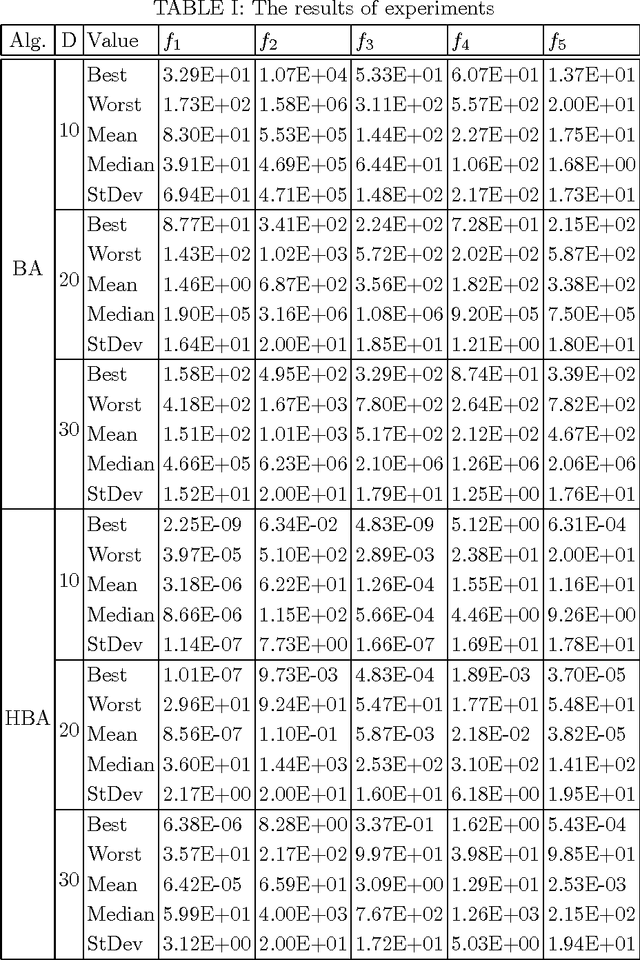
Abstract:Swarm intelligence is a very powerful technique to be used for optimization purposes. In this paper we present a new swarm intelligence algorithm, based on the bat algorithm. The Bat algorithm is hybridized with differential evolution strategies. Besides showing very promising results of the standard benchmark functions, this hybridization also significantly improves the original bat algorithm.
 Add to Chrome
Add to Chrome Add to Firefox
Add to Firefox Add to Edge
Add to Edge